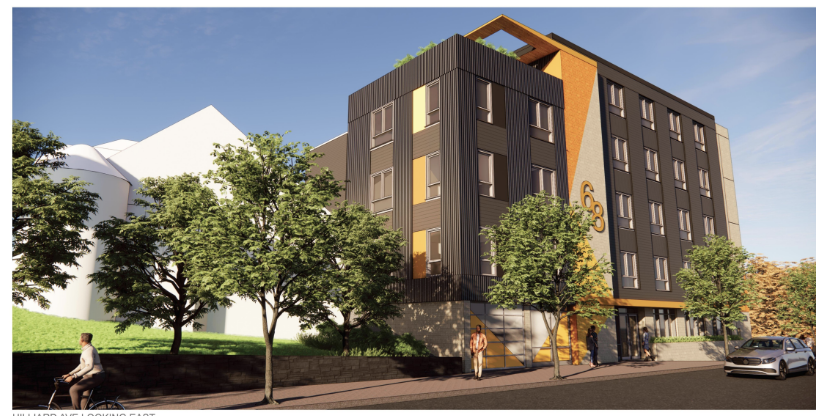Asheville is in the midst of an affordable housing crisis, and forecasters expect that conditions will only worsen over the next several years.
A 2021 Housing Needs Assessment of Western North Carolina, commissioned by the Dogwood Health Trust and completed by Bowen National Research, anticipates that Buncombe County’s population will grow by 6.8%, or nearly 7,900 people, from 2020 through 2025. By that time, the report expects that households earning less than $30,000 per year will make up a third of the county’s renters, with another third earning between $30,000 and $60,000.
Meanwhile, the availability of housing for those low- and moderate-income residents continues to lag. The same report also found that the rental vacancy rate for all Buncombe County units was about 1.2%, with well over 2,200 households on waitlists for affordable housing.
That disparity is pushing area leaders to use every tool in their box to encourage more affordable developments, including the city of Asheville Land’s Use Incentive Grant program. Better known as LUIG, the initiative aims to entice developers to include affordable units in their projects by offering property tax rebates. Council is next slated to consider such a grant Tuesday, July 26, for a 186-unit development on Long Shoals Road.
In the latest edition WTF — Want the Facts? — Xpress examines the policy and asks whether it still holds up in today’s housing market.
When did LUIG come about?
In November 2010, Asheville City Council adopted the program to bolster the development of affordable, workforce and low-income rental housing. Since then, the LUIG policy has been revised six times, most recently in 2021. The first grant was awarded in 2015 to the River Mill Lofts project.
What developments qualify?
To qualify for a grant, at least 20% of a development’s units must be offered as affordable to households earning 80% or less of the area median income (currently $45,000 for an individual, $64,250 for a family of four) for at least 20 years. Developments also must be located in Asheville city limits, and 70% of the available square footage must be residential. At least 50% of the units must accept rental assistance, including housing choice vouchers.
How much do developers get?
Grant amounts are based on a point system, and the main way for projects to earn points is through increasing affordability. Developers can also earn points from location or design criteria, such being close to grocery stores and bus lines or incorporating energy-efficient building practices.
Every five points qualifies a project for a grant equal to one year of the property tax increase resulting from the new development (in other words, the difference between the tax on the previous property value and that on the higher property value after development). Regardless of a project’s score, grants are capped at a total of $80,000 per affordable unit.
What’s been approved so far?
Since the LUIG policy was adopted, 11 projects have been awarded subsidies. Those grants — the most recent of which went to a microhousing development on Hilliard Avenue — have supported nearly 300 units affordable to residents making no more than 80% AMI.
The total amount of property taxes that will be rebated through these grants comes out to about $10 million. The average subsidy per affordable unit is thus a little over $33,000.
What’s next for LUIG?
Mayor Esther Manheimer says that while the LUIG policy has been successful overall at encouraging affordable housing in Asheville, Council will continue to revise the program to adapt to current affordable housing needs and the state of the economy. Vrtunski says that “over the next few months, staff will be digging in more into the history of this program, how it has functioned and how we can improve it.”
“There is always room for improvement,” Manheimer adds. “The economy has changed so much, especially with inflation related to construction, [that] this policy may need to amended from time to time just to stay current as an actual incentive, which is how it’s intended.”
July 22, 1:35 p.m. — This story has been updated to reflect that all approved projects LUIG projects have offered housing affordable to those earning earning 80% AMI or less. A previous version of this story said that the AMI was 60%.






Before you comment
The comments section is here to provide a platform for civil dialogue on the issues we face together as a local community. Xpress is committed to offering this platform for all voices, but when the tone of the discussion gets nasty or strays off topic, we believe many people choose not to participate. Xpress editors are determined to moderate comments to ensure a constructive interchange is maintained. All comments judged not to be in keeping with the spirit of civil discourse will be removed and repeat violators will be banned. See here for our terms of service. Thank you for being part of this effort to promote respectful discussion.